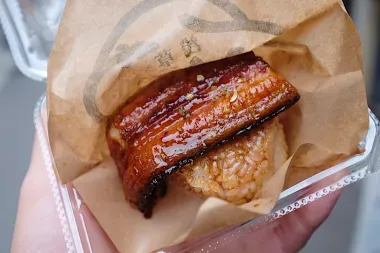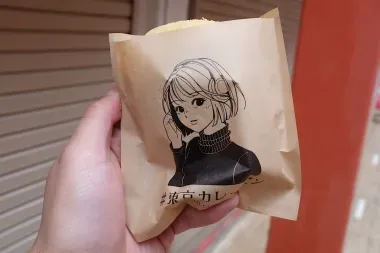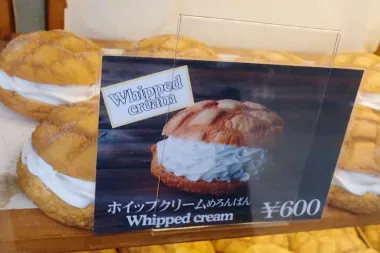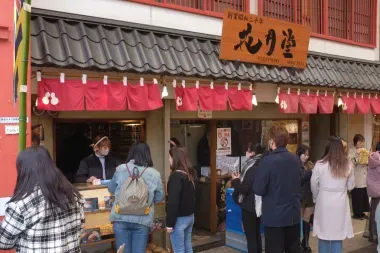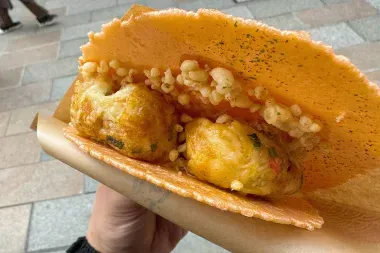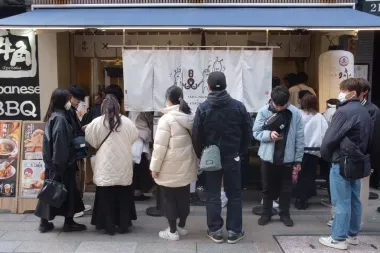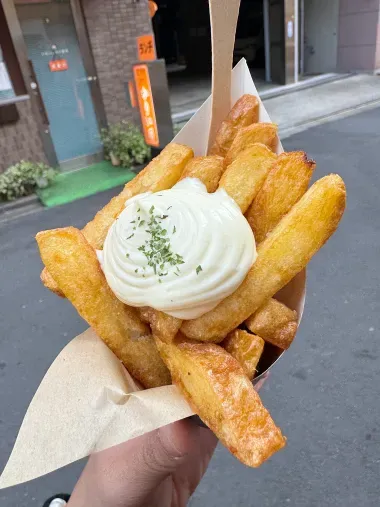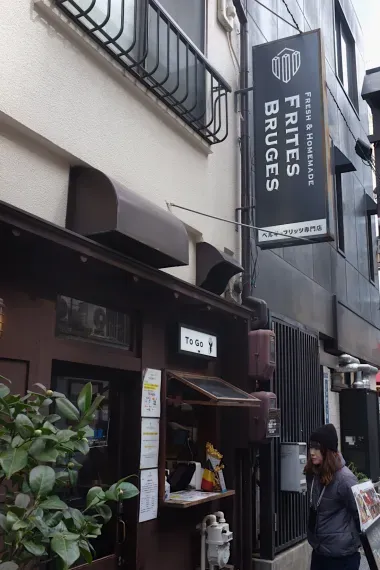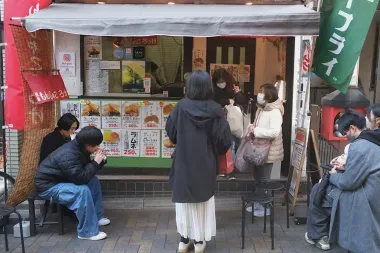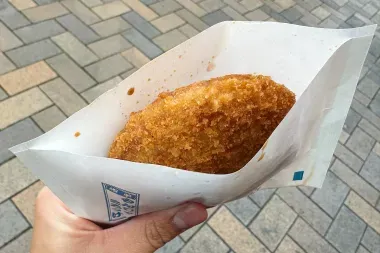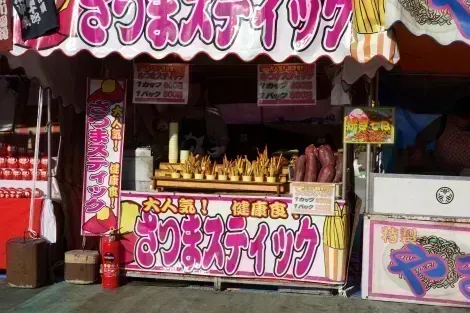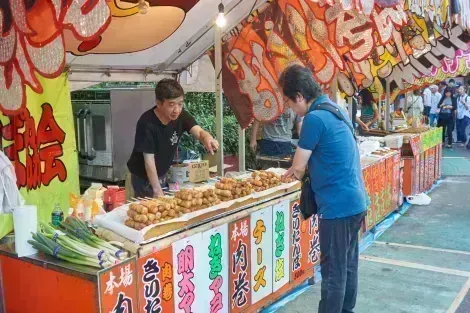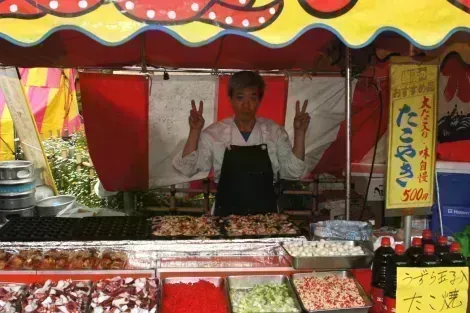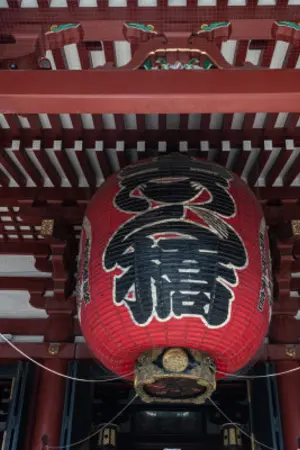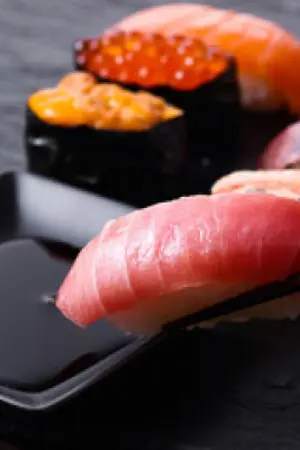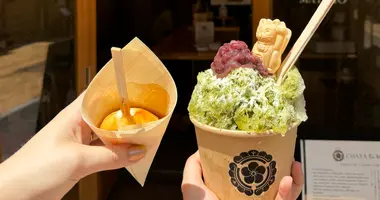Street food in Asakusa: Indulge in culture and cuisine
- Published on : 08/03/2024
- by : Joshua
- Youtube
One of the most iconic locations in Eastern Tokyo is Asakusa, largely cited as the main hub of Tokyo’s “Shitamachi.” Shitamachi refers to one of the two major historic districts of Tokyo, and the name, translating to “lower town,” is derived from it being the lower half of the city towards the bay.
Shitamachi is often characterized by a more historic, retro, and modest atmosphere. While Asakusa and the hubs of visitation that are located at its center are major tourist destinations, there is an air of authenticity that is maintained, and the famous Sensoji Temple grounds offer a step back in time. Sensoji is Tokyo’s oldest temple and is actually the most visited religious site in the entire world, garnering upwards of 30 million visitors annually.
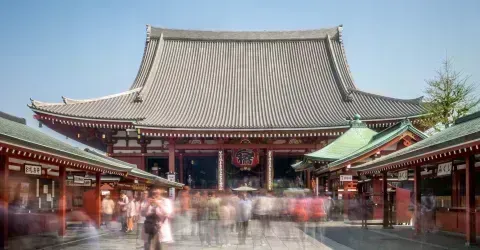
Sensoji Temple, Asakusa
@Wikimedia
While the temple and other attractions around it are the primary draw of this area, there is another pastime synonymous with central Asakusa: indulging in the many street food options! In Japanese, the word “tabearuki” (食べ歩き) can be basically translated as a “food tour” or “food walk” and entails going from location to location, sampling notable delicacies—an endeavor that thrives in Japan, given the country’s rich cuisine culture and fun approach to street food. So what are some of the staple spots for a bite to eat while exploring the culture-rich capital of Shitamachi? Take a look at our suggestions below, and maybe opt out of a big breakfast for the day.
Asakusa Unana
2 Chome-7-21 Asakusa, Taito City, Tokyo, 111-0032
Mon-Fri 10AM-5PM/Sat-Sun 10AM-6:15PM (Orders end once sold out)
Making its rounds around social media feeds as of late, Asakusa Unana specializes in a traditional Japanese favorite: unagi, or freshwater eel. A staple of the Japanese diet from the Edo Period, regardless of social class of that time, the dish is largely synonymous with Japanese cuisine to this day. Unagi Kabayaki is served charcoal grilled and glazed with a special sauce and served over rice, the dish is savory, sweet, and meaty with slight fishy notes.
At Asakusa Unana, the beloved dish is remixed and repackaged, with the classic, grilled eel cooked tender and plump and served atop a yaki-onigiri, a rice ball slathered with the same sauce and grilled, creating charring and introducing a smoky flavor. The combination is as appealing to the eye as it is to the taste buds! For those looking for a whole meal, a traditional unajuu (eel served atop a bed of rice in a box) is available as well.
If you’re spending considerable time in Asakusa, it may be best to head here as early as possible, as the shop's system operates in a way that customers order first, then pick up their food later on. The wait is typically around two hours, which seems like a long time; however, the ordering system allows for customers to go off and do other activities and sight-seeing, as well as indulge in the other great street food available in the area, before coming back to pick up their food! The unagi yaki-onigiri goes for ¥600, and the full unajuu for ¥2,200.
Tokyo Curry Pan
1-20-4 Asakusa, Taito, Tokyo
Mon-Fri 11am-6pm, Sat-Sun 10am-6pm
Located on the shopping street adjacent to Asakusa Unana is Tokyo Curry Pan, a shop you may smell before even seeing. Curry pan (“pan” being the Japanese word for bread, originally derived from French) is a ubiquitous savory snack in Japan, found at specialty shops, bakeries, and even at convenience stores.
Traditionally, a curry pan is a fried piece of bread with a Japanese curry paste in the center. A classic umami bomb of a snack for many, but Tokyo Curry Pan does a few things to differentiate themselves from the norm.
First off, the aroma emanating from the storefront hits passersby with prominent notes of truffle, as truffle oil is a unique addition to the store’s signature offering. Also noteworthy is the addition of panko bread crumbs on the outside of the curry pan and the preparation of the bread being baked rather than fried. The texture is doughy, and the curry filling is nice and complex, with a faint note of truffle that perfectly compliments the flavor without being overpowering.
There are also gobs of cheese in the curry stuffing, because adding cheese is a surefire way to elevate anything. One curry pan is ¥500.Tokyo Curry Pan also has a number of different offerings, such as croquettes and their famous mango lassi. Many will pay attention to the shop’s branding as well, featuring stylish iconography on their packaging as well as merchandising with stickers and collaborations with prominent Japanese apparel brands.
Kagetsudo
2-7-13 Asakusa, Taito, Tokyo
Daily 9AM until sold out
For many, street eats in Asakusa start and end with Kagetsudo, not far from Sensoji’s main temple and on the same street as Tokyo Curry Pan. Kagetsudo is mostly famous for one thing, “melon pan,” and they make it well—the best, even to many. Melon pan (メロンパン), simply meaning “melon bread,” is an iconic Japanese pastry made with sweet white bread that is topped with cookie dough, resulting in a snack with a medley of textures and flavors. Despite the name, it originally has no trace of melon or melon flavor, simply being called such due to the distinct shape of the bun.
The plain jane melonpan at Kagetsudo is the most representative form of the treat possible, presenting the attributes of the snack at their best: white bread with a nice firm outside and fluffy, airy inside that is contrasted with crumbly cookie on top. For those wanting a bit more, Kagetsudo also offers melon pan filled with varying flavors of whip cream, as well as melon pan filled with matcha, vanilla, or seasonal soft-serve ice cream.
The plain melon pan goes for a modest ¥280, ones filled with whipped cream go for ¥600, and ones filled with soft-serve are ¥680. Kagetsudo also sells desserts such as kakigori (shaved ice) with a number of toppings, float drinks, and more!
Asakusa Taco Taco Koromo Brothers
Asakusa 1-32-11 Asakusa, Taito, Tokyo
Mon-Wed 11AM-6PM, Thurs-Sunday 11AM-11PM
More towards the Kaminari-mon entrance of Sensoji, the stylishly designed storefront of Asakusa Tako Tako Koromo Brothers is marked with a cute noren (entrance tapestry) with the motif of three alien-like figures and an octopus. The distinct iconography is enough to draw crowds, but rest assured that the delicious takoyaki, cooked savory batter filled with bits of octopus and other garnishings, allows for them to walk-the-walk as well.
While the prototypical serving of individual takoyaki balls keeps things classic, the shop’s signature tacosen is likely the poster boy offering, and, in a way, creates a double-entendre meaning for the word “taco.” The tacosen is two pieces of freshly cooked takoyaki placed into a shrimp cracker, complemented with sauce and garnishings, then folded over, creating something reminiscent of a taco found in Mexican cuisine. The soft, almost pudding-like texture of the takoyaki contrasts with the crispiness of the shrimp cracker and allows for a fun, new way to eat the iconic Japanese street food. Seven pieces of takoyaki served in typical fashion go for ¥700, while the tacosen is ¥600. There are also offerings,such as the fried wagyu croquette for ¥300. Customers can eat inside the store or take it to go. There’s usually a bit of a line, but it tends to go by fairly fast.
Frites Bruges
1-14-1 Asakusa, Taito, Tokyo
Daily 11.30am-6pm (Last order 5:45PM)
Though it is a far cry from traditional Japanese food, a food tour in Asakusa is seldom complete without a serving of carbs from Frites Bruges. As per the name, Frites Bruges specializes in Belgian style french fries (Bruges being a major city in Belgium). Thick cut with varying shapes and patches of potato skin still on, the hands-on approach to the shop’s golden, salty morsels of umami is very apparent.
Just as much a calling card of the shop as the fries themselves, the array of complimentary sauces is impressive, but may also cause a bit of indecisiveness when ordering. There are 9 standard mayonnaise sauces, including a classic mayonnaise, garlic aioli, and honey mustard mayonnaise, along with more Japanese-esque sauces such as mentaiko mayonnaise and shichimi mayonnaise. There are also a few premium sauces and non-mayonnaise sauces available, meaning there’s something for all palettes!
Wash down the indulgent serving of fried potatoes with one of the signature drinks offered by Frites Bruges, including the Seto Inland Sea Lemonade and Peach Lemonade! There are three main serving sizes: “tall” at ¥540, “grande” at ¥640, and then a tray full of fries at ¥890. Additional sauces can be ordered for a small additional charge. Be mindful that the shop only accepts cashless payments!
Asakusa Monja Croquette
1 Chome-22-4 Asakusa, Taito City, Tokyo 111-0032
Daily 11AM-5PM (Closed on Wednesdays)
Though it is often eclipsed by its more established cousin of a dish, okonomiyaki, monja is one of the few Japanese foods that sees its full origins within Tokyo. It was invented on Tsukishima Island, which remains the most popular and reputable place in the nation’s capital to go out and eat the dish. Much like okonomiyaki, monja is a batter-based dish with mix-ins that is cooked upon a flat grill called a teppan in Japanese. However, it has a more molten texture and is typically scraped off the grill to be eaten. Not something typically “street food” in nature, but at Asakusa Monja Croquette, the staple Tokyo cuisine can be held and eaten in hand!
Fried croquettes at this modest stand in Asakusa are filled with a monja batter and mixed in with yakisoba, cheese, or other ingredients! With a golden crisp outer breading and a rich, savory, gooey filling, it is a blissful bite. The shop also offers the monja croquette on a sandwich topped with lettuce and the works as well as a fried liver cutlet and menchi katsu,a fried croquette of ground meat, for those looking for more protein.
Customers can also choose from an array of drinks including Japanese beers and sodas to enjoy, and there’s even seats outside the shop. Compared to other street food spots in Asakusa, this is one that allows for a more leisurely time, with seldom excessively long lines and a more communal, old-school environment. Note that Asakusa Monja Croquette is cash only!
Yatai Food Stalls
Aside from the permanent fixtures, mostly on weekends, food stalls will open up nearby the main Sensoji Temple building, offering staple Japanese street foods that are often found during big public events and especially matsuri (Japanese festivals). Stands with karaage, okonomiyaki, yakisoba, and ayu (whole grilled freshwater fish) are favorites of Japanese people, and fresh or candied fruits serve as great desserts to refresh during hot summer days.
A walk through Asakusa
While indulging in the delicious street-eats, it's important to take in the history and atmosphere of Asakusa. Sensoji is the most visited religious site in the world for a reason, and there are details all around with interesting stories to tell. But of course, while the central area of Askusa and Sensoji will be packed to the brim with people, a walk out, even just one or two blocks, will provide a more laid-back environment filled with discoveries. Be it with a guide or a solo adventure, don't be afraid to take in the streets of Asakusa, which are just as much a treat as the food!

